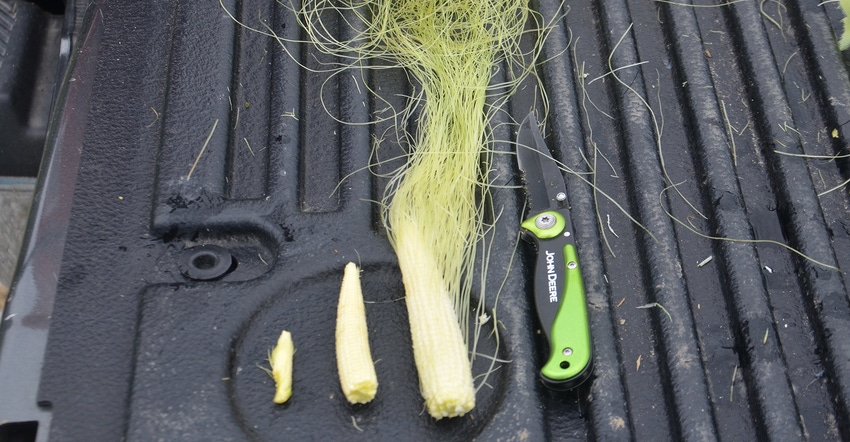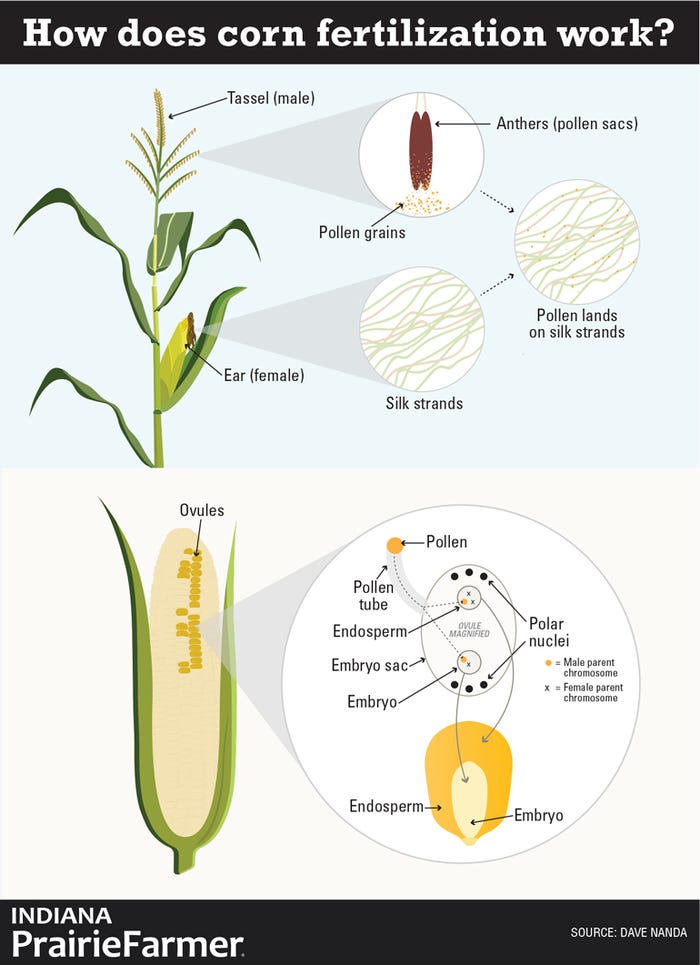
Dave Nanda, the retired plant breeder who observes the Corn Watch ’21 field, wanted pictures of the growing point in cornstalks just before tasseling. So, I grabbed my camera and a pocketknife and took my 11-year-old grandson, Graham, to the cornfield. We found three stalks and sliced them open on the pickup truck bed. When Graham saw tiny ears inside, ranging from a miniature ear to one just ready to send out silks, the questions began.
“Grandpa, why is that real tiny ear so small?”
“It’s on a plant with 12 leaves. It is just starting to develop,” I said.
“Oh, look, Grandpa, what are those tiny hairs on it?”
“Let me see. My eyes aren’t that good, but you’re right. There are hair-like filaments just starting to grow. They are called silks,” I said.
“Grandpa, what are silks?”
“Graham, look over here on the biggest ear. See all these long green things? They are silks. Each one attaches to an ovule on the tiny cob,” I answered, just starting to wonder if I was in over my head.
“Grandpa, what is an ovule? Don’t you mean kernels?”
“An ovule is the female cell waiting for a pollen grain to fertilize it. Once it is fertilized, a kernel can form,” I said. This was getting deep!
“So where do the pollen grains come from?”
“They come from the tassel, the male part. Look at this 16-leaf plant. We can unroll the top leaves and see that the tassel is almost ready to emerge. It will release thousands of pollen grains.”
“So, the kernels produce these long silks, and pollen falls on them?
“Not exactly. A silk grows from each ovule. Once a pollen grain grows down the silk tube and fertilizes the ovule, a kernel forms.”
��“OK, I am just stupid. I thought there were always kernels on ears.”
“You are not stupid, Graham,” I responded. “This is complicated. It’s a miracle of nature.”
“Grandpa, it sure is a miracle. So, pollen from the tassel makes kernels on the ear of the plant, right?”
“Yes. But the pollen could also come from surrounding plants,” I added.

“OK, I get it,” Graham said. “Grandpa, once we have ears of corn from this field this fall, can we plant them and get corn next year?”
“Farmers don’t plant this corn. The plant thinks it is making babies to carry on its line. That is why it makes so many. But we use the corn for other things — feed, ethanol and much more. If we planted kernels from these ears, we might get different kinds of plants.”
“Why, Grandpa?”
I knew that was coming. “Smart people like Dave Nanda take two parent lines and cross them to make a hybrid. The corn we just saw is a hybrid. It produces much higher yields. But if we grow these kernels out, some will revert to the characteristics of their parents. For example, some plants might be taller than others.”
“Ok, Grandpa. Then can we take an ear this fall, shell it off, and plant kernels and see what we get?”
“Sure, Graham, that would be interesting.”
Why didn’t I think of that? Leave it to an 11-year old!
About the Author(s)
You May Also Like




